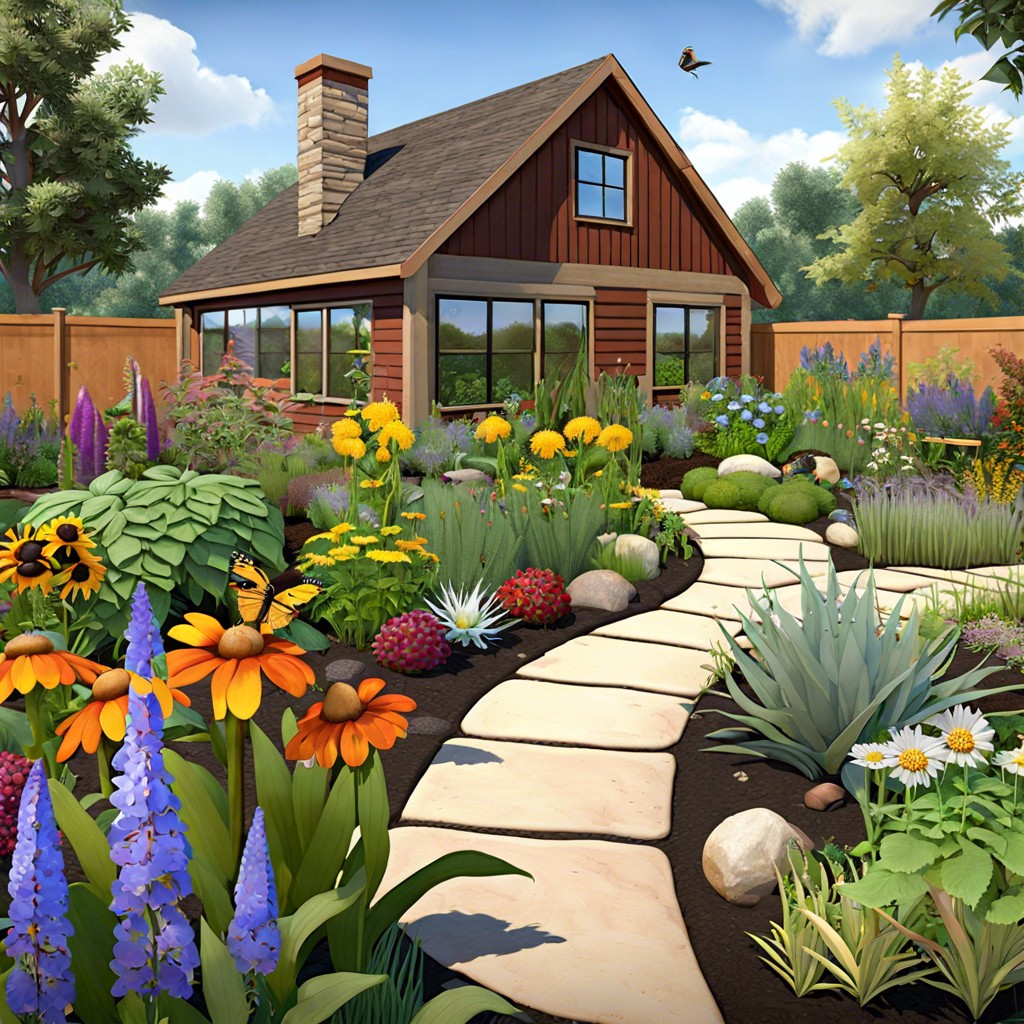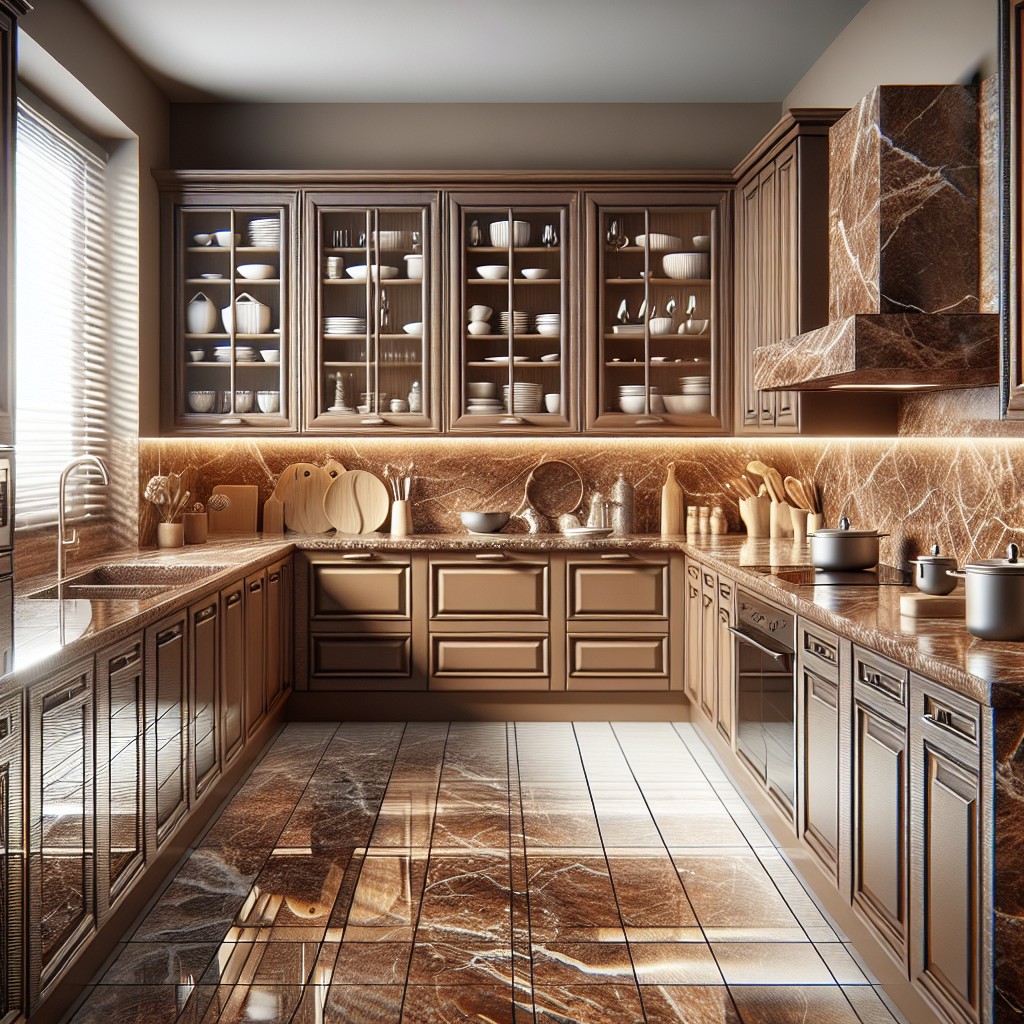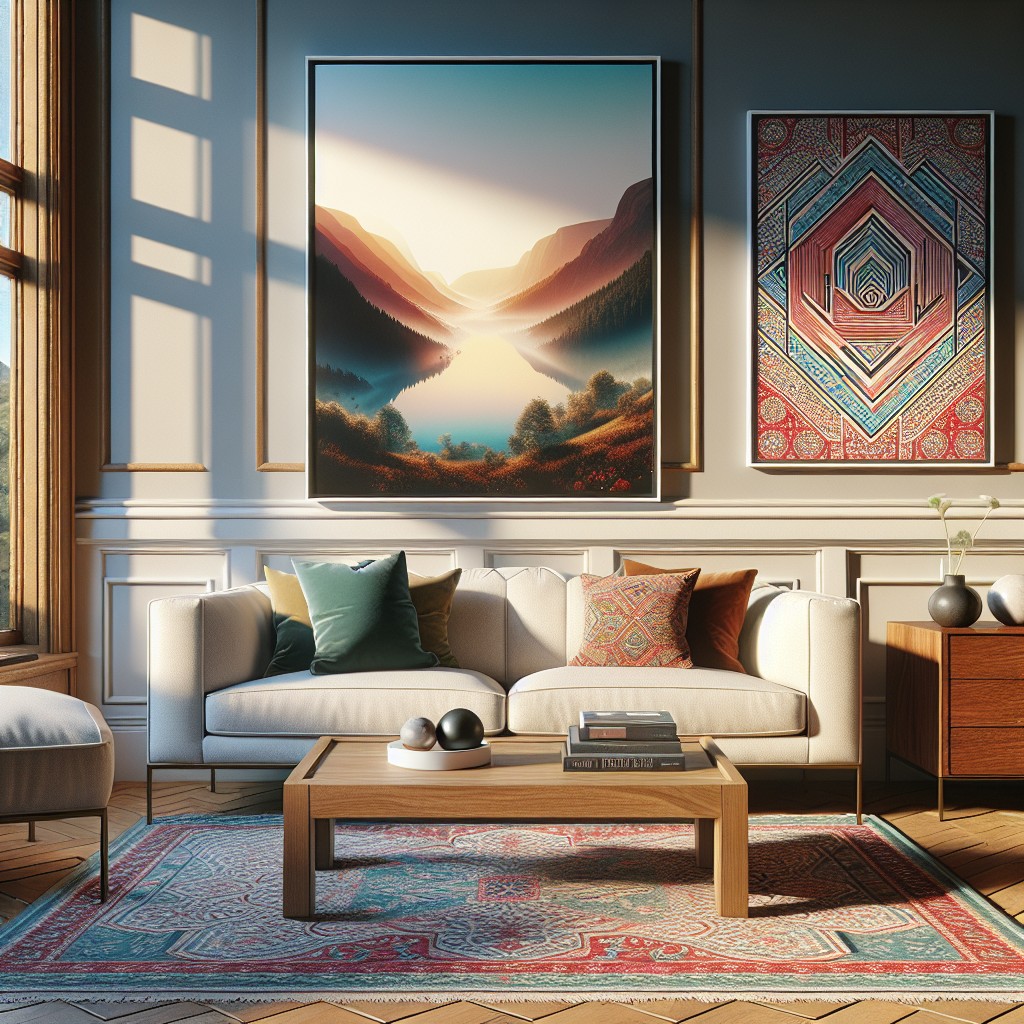Last updated on
Discover how to transform your lengthy hallway into a striking feature of your home because even this often-overlooked area can ooze charm and personality with the right decor strategy.
Key takeaways:
- Plan a theme for the hallway decor
- Use strategic lighting for ambiance and safety
- Choose light, neutral colors for an open feel
- Select durable flooring for high-traffic areas
- Incorporate mirrors and artwork to enhance space
What's Inside
Long Hallway Design – The Gameplan
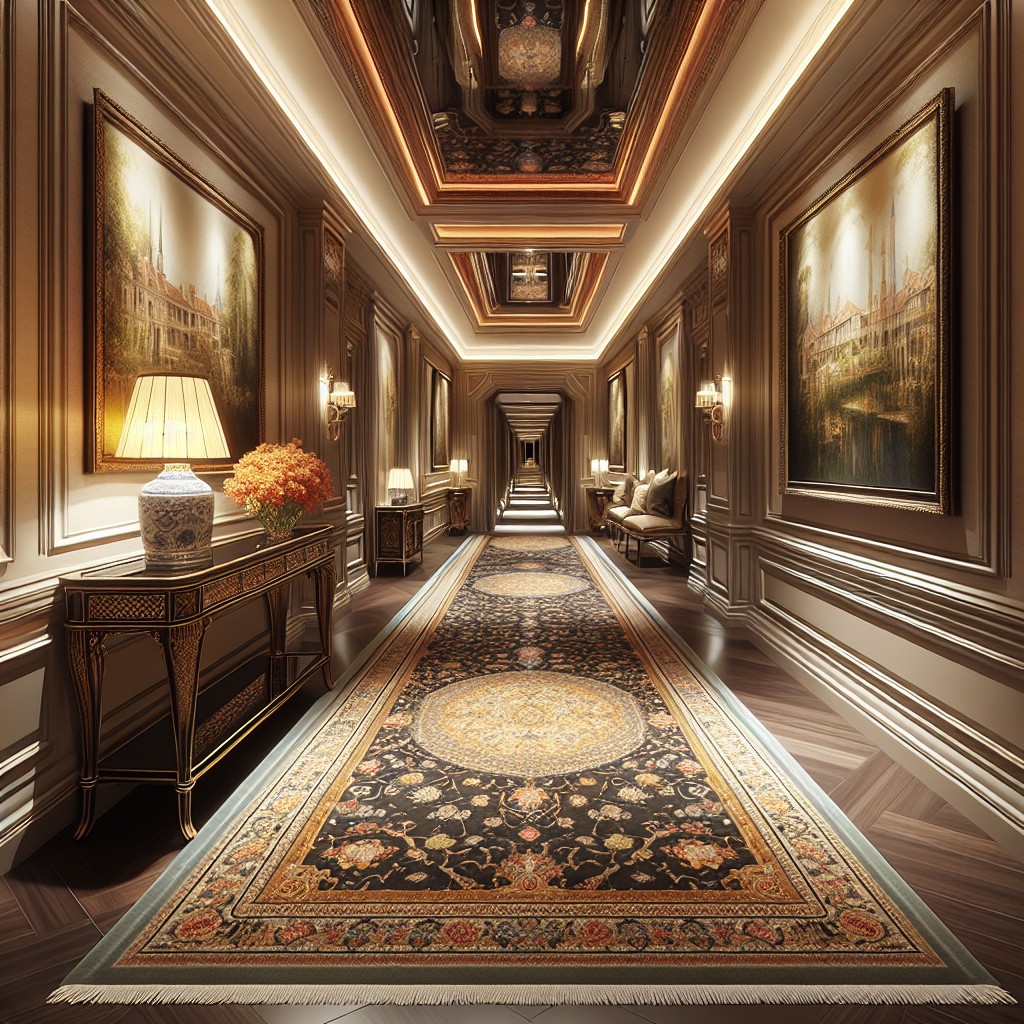
Embarking on your long hallway decoration journey begins by conceptualizing an overarching theme that will guide all design decisions. Start by envisioning the tone you wish to set – cozy, modern, eclectic, or elegant. Map out a plan that includes the type of lighting fixtures you’ll use to enhance ambiance, the color palette to set the mood, and the textures you’ll introduce for depth and warmth.
Consider the flow of your home and how the hallway can connect spaces both visually and functionally. Determine which part of the hallway will benefit from artwork or photographic galleries, and where mirrors could be placed to give an illusion of widened space. Think about the placement of occasional furniture that might be both useful and decorative.
A long hallway provides an opportunity to create a narrative that unfolds as one walks through it. Select design elements that align with your story and blend harmoniously with the adjoining rooms. Additionally, factor in the maintenance and durability of your choices; after all, a hallway is a high-traffic area. Each decision from this point on will serve as a stepping stone towards transforming this elongated canvas into an inviting and expressive part of your home.
Add Lighting
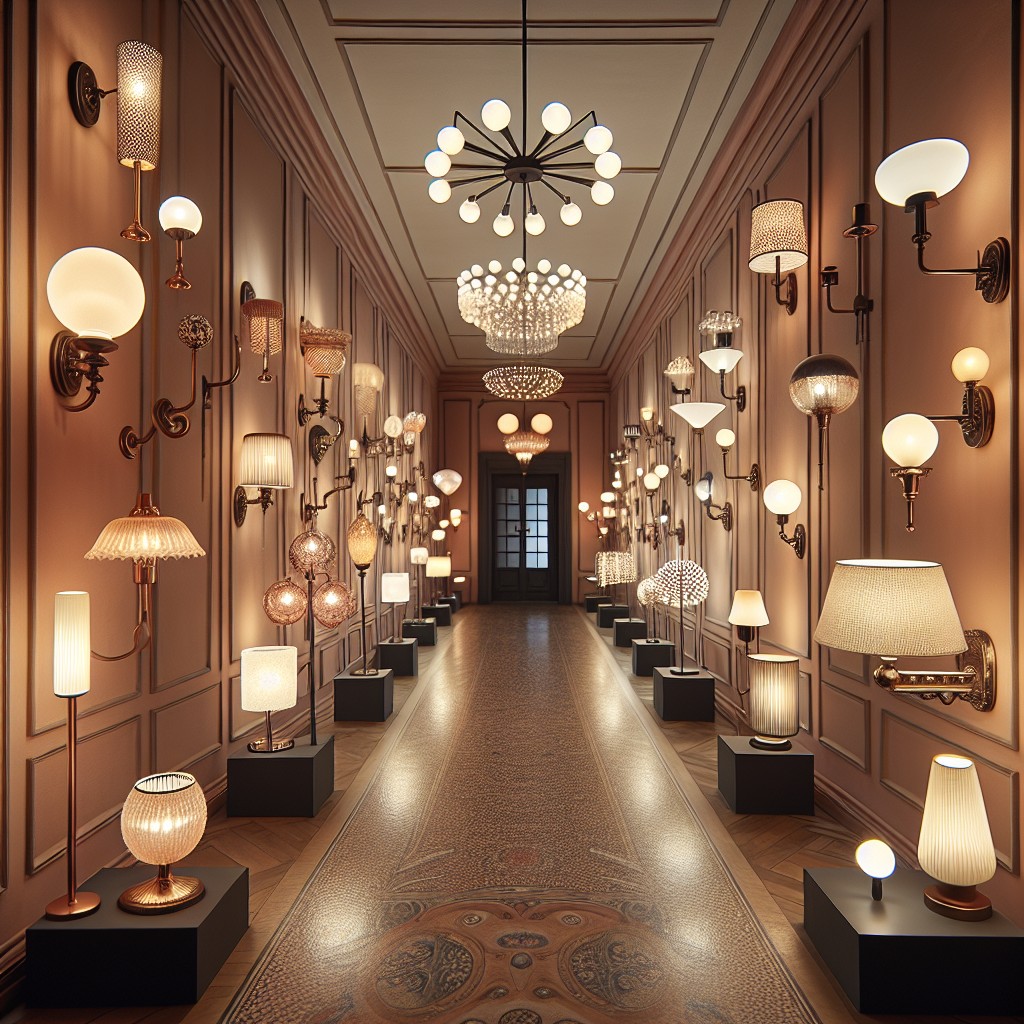
Brightening up a long hallway goes beyond aesthetics; it’s essential for safety and creating a welcoming atmosphere.
Consider installing a series of pendant lights or flush-mount fixtures to ensure even distribution of light throughout the space.
Wall sconces can add layers and warmth, while LED strip lighting along the baseboards can bring a modern touch and guide the way at night.
If natural light is minimal, opting for daylight-spectrum bulbs can mimic the sun’s glow, keeping the corridor from feeling too dim during the day.
Dimmer switches allow for adjusting brightness according to different times of the day or desired ambiance.
Remember, the right illumination can transform a mere passageway into an inviting gallery.
Color Schemes for Long Hallways
Choosing the right palette can transform your hallway from a simple passageway into an inviting space. Light, neutral colors, such as whites, creams, or soft grays, will make the area feel more open and airy.
For a bold statement, consider a darker shade on one wall as an accent to add depth. If you’re drawn to wallpaper, select a vertical stripe pattern to give the illusion of a higher ceiling. To avoid a tunnel-like feeling, stay away from excessively bright or dark colors enveloping the entire space.
In the case of artwork or photo frames, use colors that complement the walls to create a harmonious look. Remember, the play of colors can influence not just aesthetics but also the perceived proportions of your hallway.
Choosing the Right Flooring
Selecting flooring that can withstand heavy foot traffic is crucial, given hallways are high-traffic areas.
Hardwood floors offer durability and a classic look that can make the space appear longer and more inviting.
For an even more elongated effect, consider laying the boards vertically to draw the eye down the length of the hallway.
Alternatively, tiles can provide a low-maintenance option with the possibility to create unique patterns or mosaics that add visual interest and distract from the corridor’s length.
Light-colored flooring can open up the area and reflect light, whereas dark flooring might make the space feel narrower but can bring a cozy, warm atmosphere.
If you’re working with existing flooring that needs an update, consider a long runner.
Runners add warmth and texture while also defining the path through the space.
They can be easily switched out to refresh the look without a full flooring replacement.
Remember to factor in your hallway’s width.
Narrow spaces benefit from simpler floor designs to avoid a cluttered look, while wider areas allow for more intricate patterns or bolder choices, such as a herringbone or chevron pattern in wood or luxury vinyl planks.
Incorporating Runners or Rugs
A carefully chosen runner or rug can transform your hallway from a drab corridor into a striking passage. Selecting a design with horizontal stripes will visually widen the area, while a longer, linear pattern can elongate the space further.
Consider the rug’s material – durable, easy-to-clean options like wool or synthetic blends will withstand high foot traffic. Ensuring the runner is a few inches shorter than the hall’s total length creates a well-proportioned look, framing the pathway elegantly.
Aim for a width that leaves six inches of visible floor on either side, maintaining a balance between coverage and the natural lines of the hallway. For a pop of color or to introduce texture without overwhelming the space, layer smaller rugs or choose a runner with a bold pattern.
Remember, a non-slip underlay will keep the runner in place and ensure safety.
Utilizing Wall Space With Shelving
Maximize the functionality of your long hallway by incorporating shelving. When selecting shelving, consider both form and function to retain a clutter-free environment and enhance the overall aesthetic.
Floating shelves offer a sleek, modern touch and can display a variety of decor items without taking up floor space. On the other hand, built-in bookcases can transform your hallway into a mini-library or a showcase for collections and mementos.
Choose shelves that complement the wall color to create a unified look or opt for contrasting hues for a striking visual impact. Be mindful of the shelf depth; too deep may encroach on the walkway, while too shallow may limit display options. Rotate displays periodically to keep the hallway looking fresh and interesting. Remember, less is often more – avoid overcrowding to maintain a sense of spaciousness.
Creating Focal Points
Capture attention and break up the monotony of a long hallway by introducing an eye-catching feature at strategic points. This could be a statement piece of furniture, like a striking console table or a bold sculpture. Alternatively, consider a vibrant piece of artwork or a large, ornate mirror to serve as the visual anchor. You can even paint an accent wall at the end of the hallway or use contrasting wallpaper to draw the eye forward and create a sense of depth. Remember, the goal is to create intervals of interest that invite the viewer to pause and appreciate the space, fostering a journey rather than a mere passageway.
Selecting Suitable Furniture
When choosing furniture for your hallway, scale and purpose are paramount. Opt for slim consoles or narrow wall-mounted tables that don’t intrude into the walkway. These can serve as a base for decorative items or day-to-day essentials like keys and mail.
If space permits, consider a slender bench that adds function without overwhelming the area – providing a spot to sit while putting on shoes or laying down shopping bags. Remember, the key is to maintain an uncluttered passage, so anything that obstructs movement should be avoided. Stick to pieces that complement the overall decor while ensuring they are proportional to the hallway’s size.
Incorporating Plants and Greenery
Breathing life into a long corridor isn’t just about furnishings and color palettes; flora plays a crucial role, too. Here’s how:
1. Vertical Garden: Take advantage of limited floor space by setting up a vertical plant arrangement. Hanging planters, wall-mounted pots, or trellises with climbing plants add greenery without cluttering the walkway.
2. Floor Plants: For wider hallways, consider placing potted floor plants at intervals. Large-leafed varieties like the fiddle leaf fig or bird of paradise offer a visual break and can make your hallway look more inviting.
3. Consistency: Keep a consistent theme with your plant choices. Similar pots or plant types create a cohesive look throughout the space.
4. Low Maintenance: Opt for low-light and low-maintenance options such as snake plants, ZZ plants, or pothos, which will thrive in hallway conditions with minimal care.
5. Seasonal Updates: Introduce seasonal plants or flowers in vases for a pop of color and a fresh look throughout the year.
6. Scale and Proportion: Be mindful of plant scale; smaller hallways benefit from smaller plants, while larger spaces can handle bigger, more dramatic greenery.
Incorporating these points, you’ll not only decorate but also energize the space, making your long hallway a naturally refreshing journey from room to room.
Mirror Placement to Enhance Space
Strategically positioned mirrors do wonders for elongating a hallway visually. Place large mirrors, or a series of smaller ones, opposite windows to bounce natural light throughout the space, creating an airy feel.
Consider floor-length mirrors at the end of the hallway to give the illusion of a more expansive area. For a touch of drama, use mirrors with unique shapes or ornate frames to double as art pieces. Remember, the goal is to reflect light and space, not clutter, so be mindful of what’s opposite the mirrors.
This trick not only brightens up a potentially dim area but can transform the corridor from a simple pass-through to a dynamic dimension of your home.
Using Artwork Strategically
Artwork can transform a mundane hallway into a gallery of your personal tastes and stories. When selecting pieces, consider their size and how they will interact with the length of the corridor. A single large piece can serve as a striking focal point, while a series of smaller works creates rhythm and flow, guiding the eye down the space.
Align the center of your artwork at eye level, which is typically around 57 inches from the floor, to create uniformity. For cohesion, implement a consistent spacing between works. If you’re creating a gallery wall, keep the spacing tight to build a collective atmosphere rather than a fragmented one.
Varying the type of artwork can also add interest. Mix mediums, like photography, abstracts, and traditional paintings, for a curated effect. Keeping frames similar in color can maintain a seamless look, whereas different frame styles add eclectic charm.
For those longer stretches, think about the narrative you’re telling through your artwork. Sequence pieces to reflect a journey or a progression, naturally drawing visitors towards the end of the hallway. Remember, art serves as a visual break, so ensure it complements the wall color to either stand out or blend in, depending on the desired impact.
Accessory Choices for Impact
Choosing the right accessories can transform a mundane hallway into a visually engaging pathway. Opt for items that complement the overall decor theme without overwhelming the space.
- Wall-mounted hooks: They serve a dual purpose of decoration and utility. Select designs that match your aesthetic for an added touch of personality.
- Decorative bowls or sculptures: Place these on any console tables or shelving to add visual interest at eye level. Remember, less is more to avoid clutter.
- Vases: A tall, striking vase can serve as a statement piece, especially when paired with long-stemmed flowers or branches that draw the eye upward.
- Family photos or small artworks: Group these in cohesive frames but vary the sizes for dynamic appeal. Consider symmetrical arrangements for a harmonious look.
The key is balance; accessories should enhance, not overpower. By carefully selecting pieces that strike the right note, the hallway will tell its own story as guests move through your home.
Maximizing Natural Light
Harnessing the full potential of daylight can transform your hallway from a dark corridor to a radiant passageway. If your space has windows, keep them unobstructed by heavy curtains or blinds to allow every drop of sunshine to filter through. Consider a light-reflective window treatment, such as sheer curtains, to diffuse light without blocking it.
For hallways lacking in windows, strategically placed mirrors can work wonders. Position them opposite to the doorways that lead to naturally lit rooms; this will bounce light into the corridor, effectively brightening it. Glossy finishes on furniture or high-gloss paint on trim can also reflect light and contribute to an overall brighter space.
If privacy isn’t a concern, swapping out solid doors for ones with glass panels can invite light from adjacent rooms. Frosted or textured glass maintains privacy while still playing with light transmissibility. Lastly, keep the color palette light and neutral to enhance the sense of brightness, airy lightness.
Remember, playing with light isn’t just about adding fixtures – it’s about creatively amplifying the natural light already present.
Balancing Aesthetic and Functionality
A well-decorated hallway serves more than just a path from one room to another. It’s a blend of beauty and practicality, ensuring the space isn’t just pleasing to the eye but also fulfills its function without clutter.
First, consider the foot traffic; a hallway must allow for easy movement. Keep furniture minimal and to the sides to avoid obstruction. For instance, a sleek console table that provides storage without protruding into the walkway kills two birds with one stone.
Next, think about essential items that can double as decor, such as coat racks or umbrella stands. These pieces should marry style with usability, perhaps featuring interesting shapes and colors that complement the hallway’s overall design theme.
Finally, address the walls and floors. Opt for durable paint finishes and hard-wearing flooring that withstand high use yet add to the hall’s visual appeal. Remember, your choices here need to handle the hustle and bustle of daily life while still contributing to the space’s charm.
Maintaining a Cohesive Style
When unifying your hallway decor, consider the following to ensure a seamless transition from space to space:
1. Continuous Color Palette: Stick to a color scheme that complements adjacent rooms. This doesn’t mean all colors must match, but they should harmonize.
2. Consistent Materials: Use the same or similar materials for elements like door handles, light fixtures, and picture frames to create a subtle thread of continuity.
3. Style Echoing: Reflect the design style of your home in the hallway. For example, if your home is modern, incorporate clean lines and minimalist features in the hallway.
4. Repetition of Patterns: If patterns are part of your home’s theme, repeat them in hall rugs, wall art, or textiles along the hallway.
5. Transition Pieces: Place items that bridge different styles, such as a transitional piece of furniture or decor, to smoothly guide the eye through the space.
Harmony doesn’t mean monotony; subtle variations within these guidelines keep the space intriguing while maintaining cohesiveness.
FAQ
What are some simple strategies for bringing light into a narrow, dark hallway?
Install mirrors, use light paint colors, add slim-line lighting fixtures, and incorporate glass-panelled doors to bring light into a narrow, dark hallway.
How can mirrors be strategically placed to enhance the look of a long hallway?
Mirrors can be strategically placed to enhance the look of a long hallway by arranging them at intervals along the walls, opposite each other, or at the end of the hallway to reflect light, create an illusion of space, break visual monotony, and add decorative interest.
What kind of furniture items work best in a long hallway without causing clutter or obstruction?
Long and narrow pieces such as console tables, wall mirrors, and wall-mounted shelving units work best to adorn a long hallway without causing clutter or obstruction.
